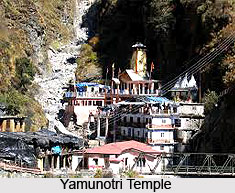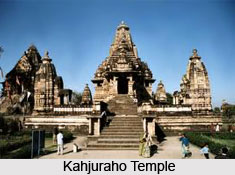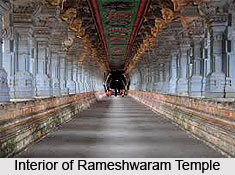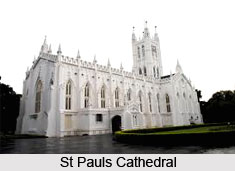Ambience of Pilgrimage Sites in India is intrigued by the nuances of a spirit of holiness, peace and sublime profound serenity. India is a multi cultural and multi religious nation and so the pilgrimages in India encompass everything from mosques, temples, gurudwara, cathedrals and Jain shrine. The unspeakable air and aura of spirituality is marked by the assortment of gods and miscellaneous, dissimilar religious beliefs, generating copious, plentiful strands, all wrought together into a knot of sameness when it comes to the touching of fundamental concepts. Hinduism, Islam, Christianity, Buddhism, Jainism, Sikhism and Zoroastrianism have respective distinctness, and yet they share a commonness of principles that communicate the basic purpose of religion. Every religion has its own places of worship spread over the land. The confluence of religions adds variety to the kind of pilgrimage-spots, which attract pilgrims from all around the world.

Ambience of Pilgrimage Sites varies according to the provincial concentration and the topography of a given place. When it comes to the North Indian sites the pilgrimage sites vary in taste and architectural variations and the number of pilgrims and their types all throughout the year. Pilgrims in large numbers visit these monasteries to attain spiritual enlightenment. The well known monasteries are Lamayuru monastery, and Alchi monastery among others. The majestic peaks of the mighty Himalayas are invested with a heritage of holiness. And the topography of North India itself mirrors the ambience of the pilgrimage sites. The Himalayas serve as the exotic abode of the popular "Chardham" or four pilgrimage centres of Hinduism namely Gangotri, Yamunotri temple, Kedarnath and Badrinath. Haridwar is also an important Hindu pilgrimage site. The Kumbha mela of Haridwar is the largest religious fair in the country that is abundant with the fragrance of religiosity and peace. Rishikesh, situated in the northern part of Uttarakhand, is known as the Tapo Bhumi or Place of Meditation. Lord Vishnu is said to have demolished the demon, Madhu, here in Rishikesh. The shrine of Vaishno Devi in Jammu and Kashmir is one of the most notable Hindu pilgrimage centres in north India. The shrine consists of one of the holy body remnants of the Female Creative Power of the Universe, called Shakti by the ancient Vedic scriptures. The shrine of Mata Vaishno Devi is located in a cave and has images of three deities the Mahakali, Mahalakshmi and Mahasaraswati. Ladakh is a home to some of the splendid monasteries of the world.
 The Ajanta Ellora caves in Maharashtra in West India are a holy place for the Buddhist pilgrims. The state of Goa has numerous cathedrals which are of great religious significance. The famous Se cathedral is a revered religious centre for the Christians. Some of the famous places of worship in Rajasthan are Shrinathji Temple, Nathdwara; Jain Temple, Ranakpur; Brahma Temple, Pushkar; Dilwara Temple, Mount Abu; Rishabdevji Temple, Dhulev; Eklingji Temple, Udaipur; Shri Mahavirji Temple, Dargah Sharif, Ajmer. The Dargah Sharif is the revered place where Muslim saint Khwaja Muinuddin Chishti lays buried, and attracts pilgrims and devotees from all parts of the Islamic world. Gujarat in west India is mainly noted for its temples such as the Somnath temple which draws millions of devotees.
The Ajanta Ellora caves in Maharashtra in West India are a holy place for the Buddhist pilgrims. The state of Goa has numerous cathedrals which are of great religious significance. The famous Se cathedral is a revered religious centre for the Christians. Some of the famous places of worship in Rajasthan are Shrinathji Temple, Nathdwara; Jain Temple, Ranakpur; Brahma Temple, Pushkar; Dilwara Temple, Mount Abu; Rishabdevji Temple, Dhulev; Eklingji Temple, Udaipur; Shri Mahavirji Temple, Dargah Sharif, Ajmer. The Dargah Sharif is the revered place where Muslim saint Khwaja Muinuddin Chishti lays buried, and attracts pilgrims and devotees from all parts of the Islamic world. Gujarat in west India is mainly noted for its temples such as the Somnath temple which draws millions of devotees.
 Madhya Pradesh in central India houses several temples and mosques which are visited by thousands of devotees every year and the ambience is coloured by the local populace and the ones who visit the shrines. Ujjain is chiefly known for the outstanding temples devoted to the various Hindu deities and Bhopal houses quite a few impressive mosques. Sanchi in Madhya Pradesh is a religious site for the Buddhist pilgrims. Religious places in east India are among the most visited pilgrimage centres. Kolkata in West Bengal has the famous Dakshineswar temple and the Belur Math which are renowned religious tourist centres all over India. There are also some famous cathedrals in Kolkata. Orissa houses mainly Hindu temples like sun temple in Konark and Jagannath temple in Puri. The Lingaraja Temple, built in the 11th Century, projects a half Shiva and a half Vishnu Linga, called the Hari-Hara Linga. This presiding deity is the Tribhubaneshwara, meaning the Lord of the Three Worlds. Other major attractions are the Mukteswara Temple, the Parsurameswara Temple, Raj Rani Temple, the Brahmeshwara Temple and the Iskcon Temple. The Kamakhya temple in Guwahati in Assam is also a much visited religious centre. Bodhgaya in Bihar has an eternal appeal to spirituality. It is the under the worshipped Bodhi Tree, where the hermit Gautama attained the Ultimate Truth and was spiritually reborn as Lord Budha, with the Enlightened Soul. The Mahabodhi Temple located in this particular site is of prime religious eminence, not only for the Buddhists, but also for the Hindus, who worship him as the ninth incarnation of Lord Vishnu.
Madhya Pradesh in central India houses several temples and mosques which are visited by thousands of devotees every year and the ambience is coloured by the local populace and the ones who visit the shrines. Ujjain is chiefly known for the outstanding temples devoted to the various Hindu deities and Bhopal houses quite a few impressive mosques. Sanchi in Madhya Pradesh is a religious site for the Buddhist pilgrims. Religious places in east India are among the most visited pilgrimage centres. Kolkata in West Bengal has the famous Dakshineswar temple and the Belur Math which are renowned religious tourist centres all over India. There are also some famous cathedrals in Kolkata. Orissa houses mainly Hindu temples like sun temple in Konark and Jagannath temple in Puri. The Lingaraja Temple, built in the 11th Century, projects a half Shiva and a half Vishnu Linga, called the Hari-Hara Linga. This presiding deity is the Tribhubaneshwara, meaning the Lord of the Three Worlds. Other major attractions are the Mukteswara Temple, the Parsurameswara Temple, Raj Rani Temple, the Brahmeshwara Temple and the Iskcon Temple. The Kamakhya temple in Guwahati in Assam is also a much visited religious centre. Bodhgaya in Bihar has an eternal appeal to spirituality. It is the under the worshipped Bodhi Tree, where the hermit Gautama attained the Ultimate Truth and was spiritually reborn as Lord Budha, with the Enlightened Soul. The Mahabodhi Temple located in this particular site is of prime religious eminence, not only for the Buddhists, but also for the Hindus, who worship him as the ninth incarnation of Lord Vishnu.
 Climbing down to south of India, the temple of Tirupati Balaji is on the southern banks of Swami Pushkarani, in Tirupati of Andhra Pradesh. The presiding God is Lord Venkateshwara. Kanchipuram is regarded, as one of the Seven Sacred Cities of India .It was the historical capital of the Pallavas, the Cholas and the Rayas of Vijaynagara. Mahabalipuram, globally recognised for its shore temples was the second capital of the Pallava kings of Kanchipuram. In the Shore Temple, built on a rocky outcrop, both Lord Shiva and Lord Vishnu are enshrined under one roof. Of the eight Rathas, five are named after the Pandavas, the mighty heroes of the epic, Mahabharata, and even their wife, Draupadi. The Rameshwaram Temple, at the island of Rameshwaram in Tamil Nadu, is perched on the Gulf of Mannar. The worshipped deity is the Linga of Sri Ranganatha, a manifestation of Lord Shiva, and one of the Twelve Jyotirlingas of India. Kerala in south India reflects the traits of secular India. The churches in Kerala are St. Mary`s Cathedral, St. George`s Cathedral, Marth Mariam Church etc. among others and are popular among the Christian devotees. Few mosques in Kerala are Cheraman Juma Masjid, Madayi Mosque, Kanjiramattom Mosque and Pazhayangadi Mosque which are much visited Muslim religious centres. The religious places in Kerala like the holy Tirunavaya Temple and Mangala Devi Temple are visited by a number of Hindu devotees.
Climbing down to south of India, the temple of Tirupati Balaji is on the southern banks of Swami Pushkarani, in Tirupati of Andhra Pradesh. The presiding God is Lord Venkateshwara. Kanchipuram is regarded, as one of the Seven Sacred Cities of India .It was the historical capital of the Pallavas, the Cholas and the Rayas of Vijaynagara. Mahabalipuram, globally recognised for its shore temples was the second capital of the Pallava kings of Kanchipuram. In the Shore Temple, built on a rocky outcrop, both Lord Shiva and Lord Vishnu are enshrined under one roof. Of the eight Rathas, five are named after the Pandavas, the mighty heroes of the epic, Mahabharata, and even their wife, Draupadi. The Rameshwaram Temple, at the island of Rameshwaram in Tamil Nadu, is perched on the Gulf of Mannar. The worshipped deity is the Linga of Sri Ranganatha, a manifestation of Lord Shiva, and one of the Twelve Jyotirlingas of India. Kerala in south India reflects the traits of secular India. The churches in Kerala are St. Mary`s Cathedral, St. George`s Cathedral, Marth Mariam Church etc. among others and are popular among the Christian devotees. Few mosques in Kerala are Cheraman Juma Masjid, Madayi Mosque, Kanjiramattom Mosque and Pazhayangadi Mosque which are much visited Muslim religious centres. The religious places in Kerala like the holy Tirunavaya Temple and Mangala Devi Temple are visited by a number of Hindu devotees.





















